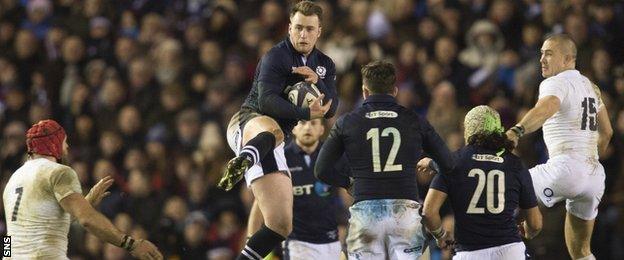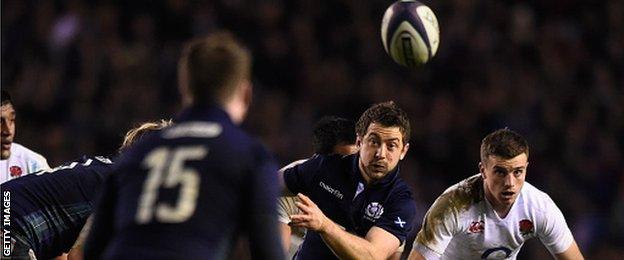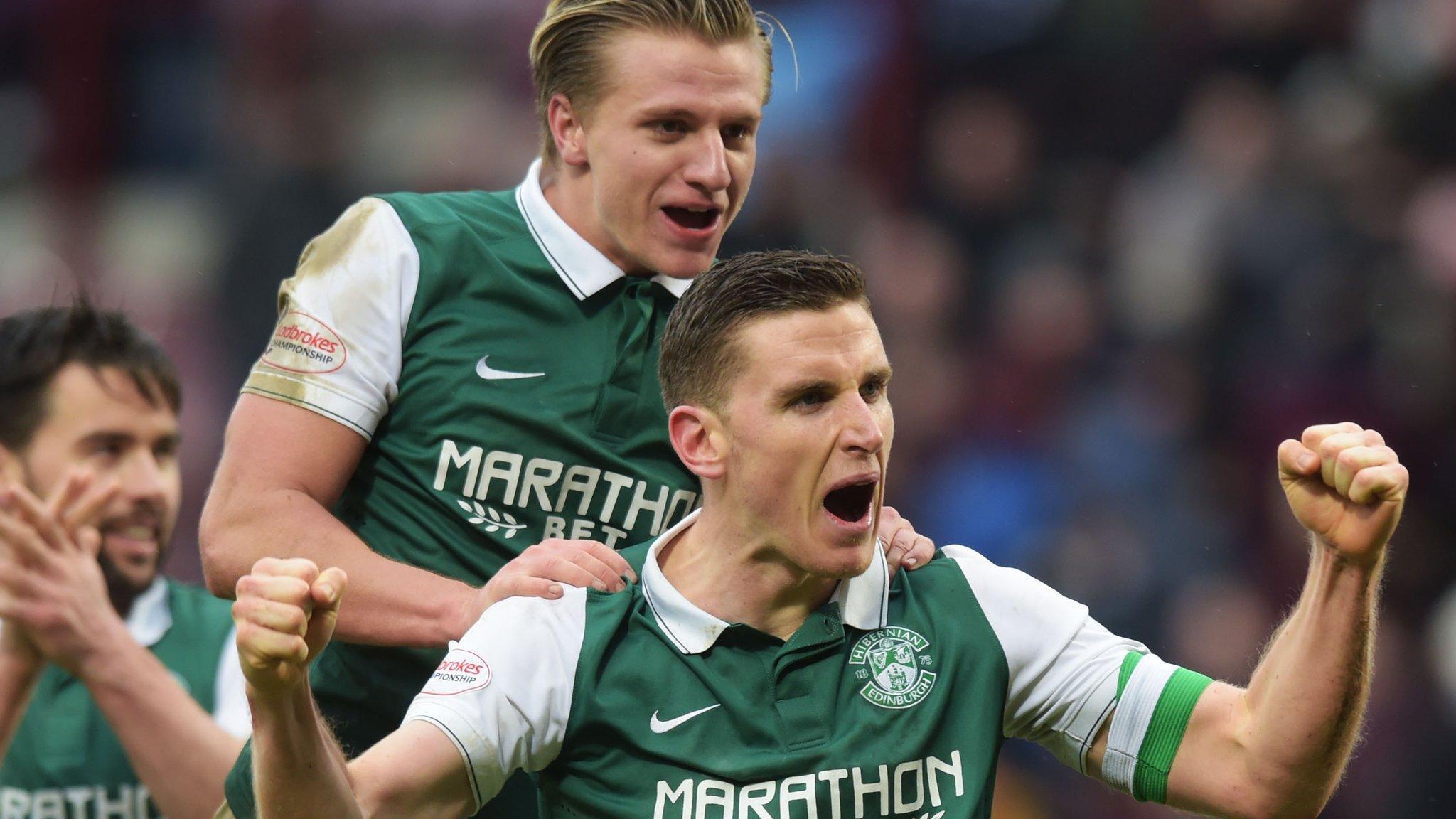Six Nations 2016: Scotland have no need to panic - Mike Blair
- Published
BBC Scotland's Six Nations Extra
It was the first round of the Six Nations and, reflecting back on Scotland's defeat by England, that fact was apparent throughout.
Both teams struggled to find continuity in a game that was punctuated with errors.
And whilst always down on the scoreboard, Scotland were in with a chance of winning the game going into the last 10 minutes, which cannot always be said of the fixture.
There were a few technical areas that Scotland came second best in and these are the areas I feel had a strong bearing on the game.
This weekend's live TV coverage | ||
|---|---|---|
Sat, 13 Feb (14:25) | France v Ireland | BBC One |
Sat, 13 Feb (16:50) | Wales v Scotland | BBC One |
Sun, 14 Feb (14:00) | Italy v England | ITV |
The aerial battle

Stuart Hogg was one of Scotland's standout performers against England
The aerial battle was lost, which correlates to the possession (Scotland 46%, England 54%) and territory (44%, 56%) statistics.
England probably won about 70% of all contestable kicks and it was interesting to see the difference in the techniques from the English.
They appeared to try and catch incoming kicks but when it came to their own chase on kicks, they opted to bat them back with single arms to 'crumbers' picking up the rebounds.
It makes sense as not many receivers will attempt a two-handed catch above their heads and a higher single arm can deflect the ball back.
Ball presentation

Scotland have failed to score a try against England at Murrayfield since 2004
There were a few sloppy handling errors from the Scots, and that's not just catching and passing, it encompasses ball placement in attack too.
There were numerous examples of attacks in scoring areas breaking down as a result of balls spilling out of a ruck or tackle.
Quality of passing
It was interesting speaking after the match to a former Scotland great, Jim Renwick, about backline attack and the difference that the quality of passing makes in the ability to convert opportunities into points.
The difference between outside backs taking the ball in their hip as opposed to in front of them, may seem minor in the grand scheme of things but it can have significant impact. The English looked a touch more accurate and slick with their overall distribution.

Greig Laidlaw kicked all Scotland's points against England
Scotland's attacking game will be much improved next week as familiarity grows. The reading of fly-half Finn Russell is key as he takes the ball to the line, holds the defence and looks for runners to pierce gaps.
I felt his support players stood off a bit, allowing the English defence time to react and make their tackles. I think there were also times when Scotland were looking for the perfect attacking shape before playing the ball.
When the ball is slow anyway I can understand slowing the ball down more to set attacking structure but otherwise I believe in just playing and keeping the tempo up, even if the scrum-half is not at the breakdown. If the attack are not set, you can bet that the defence are even less so.

No need to panic
Matt Taylor, Scotland's defence coach, will be frustrated as this was very close to an excellent defensive display in terms of shape and intensity and there were very few system errors.
The George Kruis try was a simple missed tackle and the Jack Nowell try was the result of a slick wrap-around play, favoured by Eddie Jones throughout his coaching career. It could have been defended better but sometimes you have to put your hand up and say that an attacking play was well executed.
The maul defence, although still not perfect with some penalties conceded, was much improved from previous matches.
Scotland kicked very effectively throughout the game. Greig Laidlaw, Russell and Stuart Hogg executed a variety of probing and competitive kicks and could have potentially done more.
Highlights: Scotland 9-15 England
There were a number of neutral phases - attacks going nowhere - in the middle third of the pitch, and with accurate kicks like in the first few minutes you can really put the squeeze on the opposition.
Some things to work on but there's no need to panic. You need to be at your best to win games for Scotland in the Six Nations and Scotland were just off it.
They were perhaps over-hyped post World Cup and now are being overly criticised for this performance. The reality is this is still a young side continuing to develop and needs time to do so.
They can win in Wales next week but they will need to be at their very best to do so.
- Published8 February 2016

- Published7 February 2016

- Published7 February 2016

- Published6 February 2016